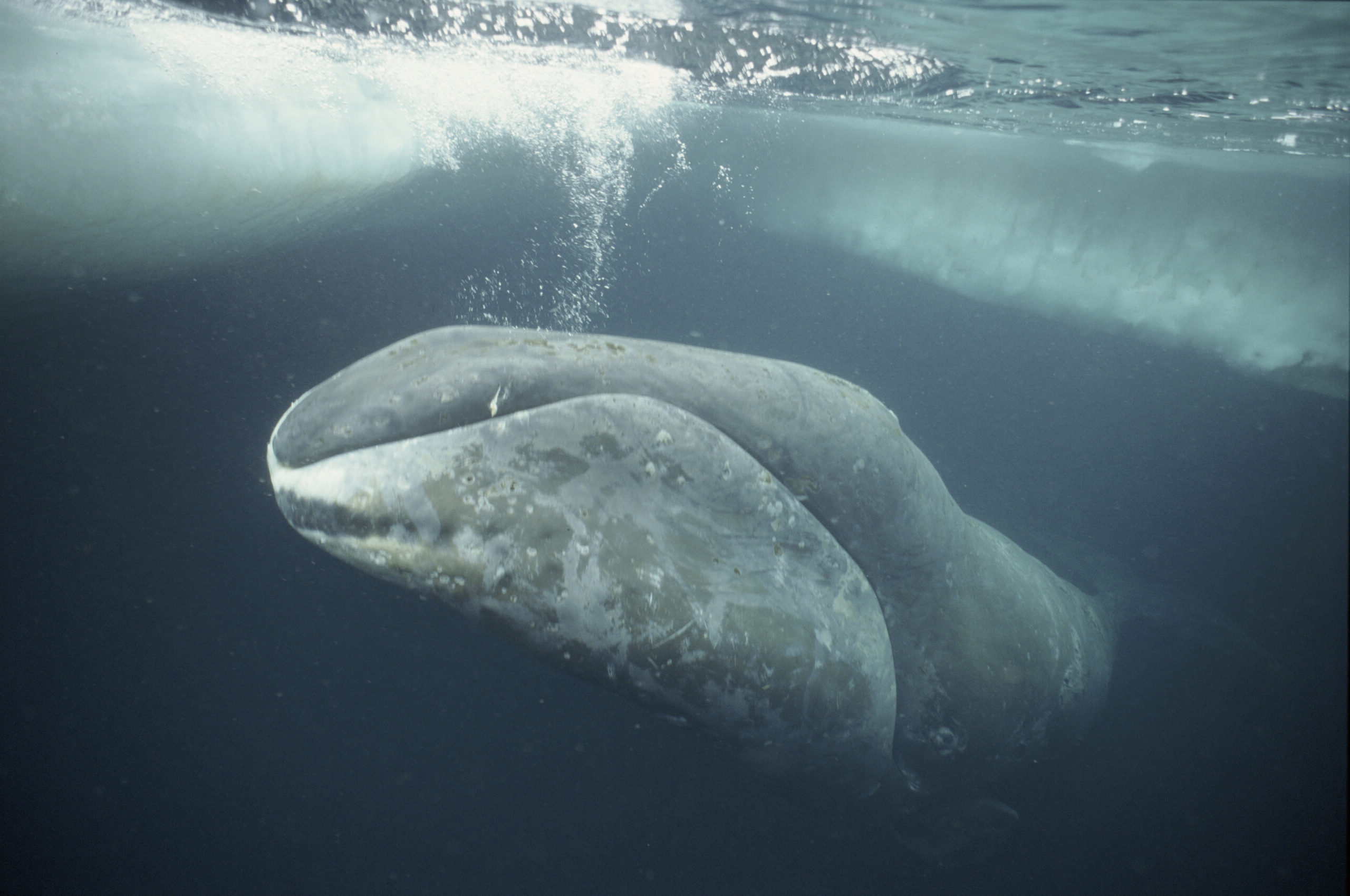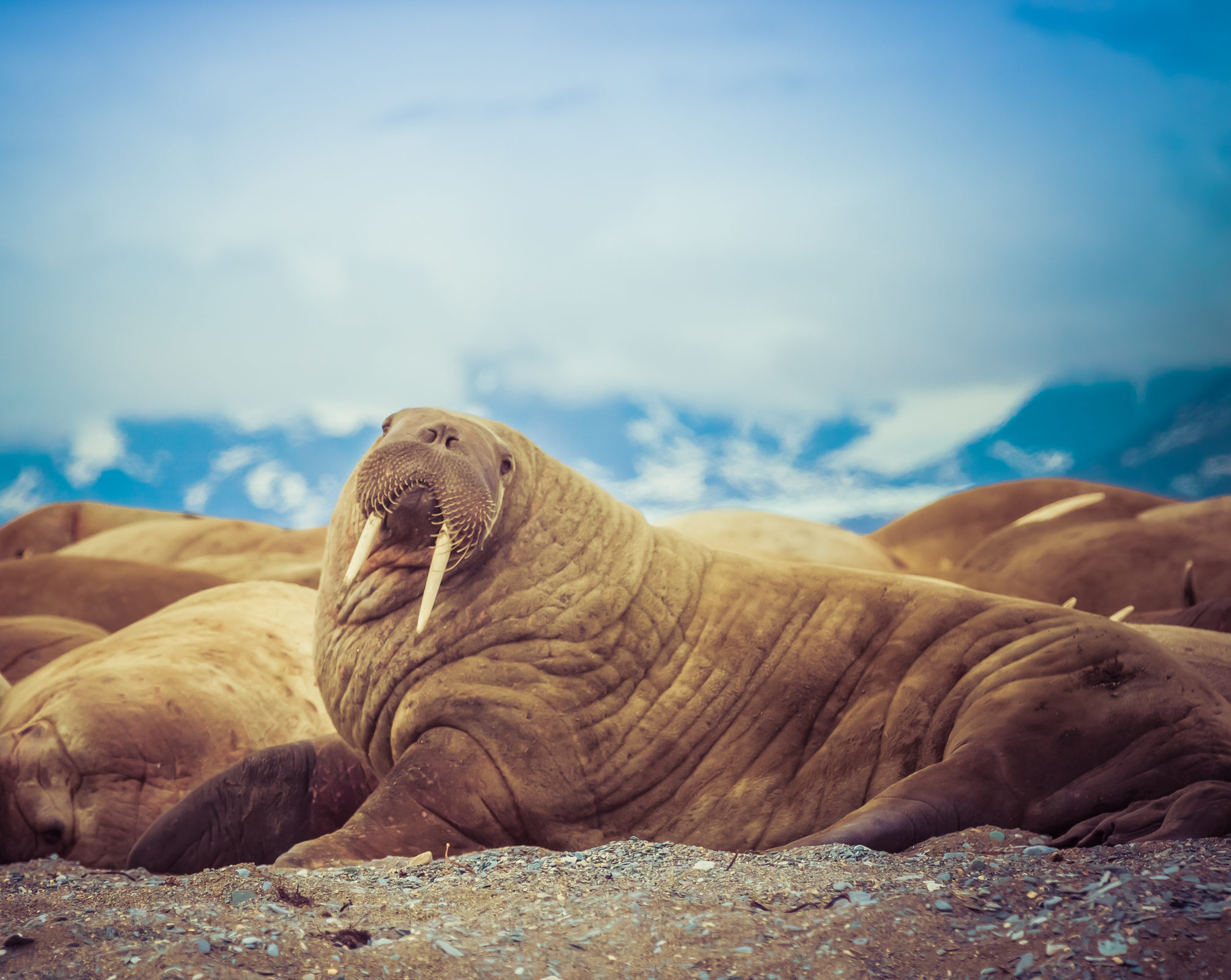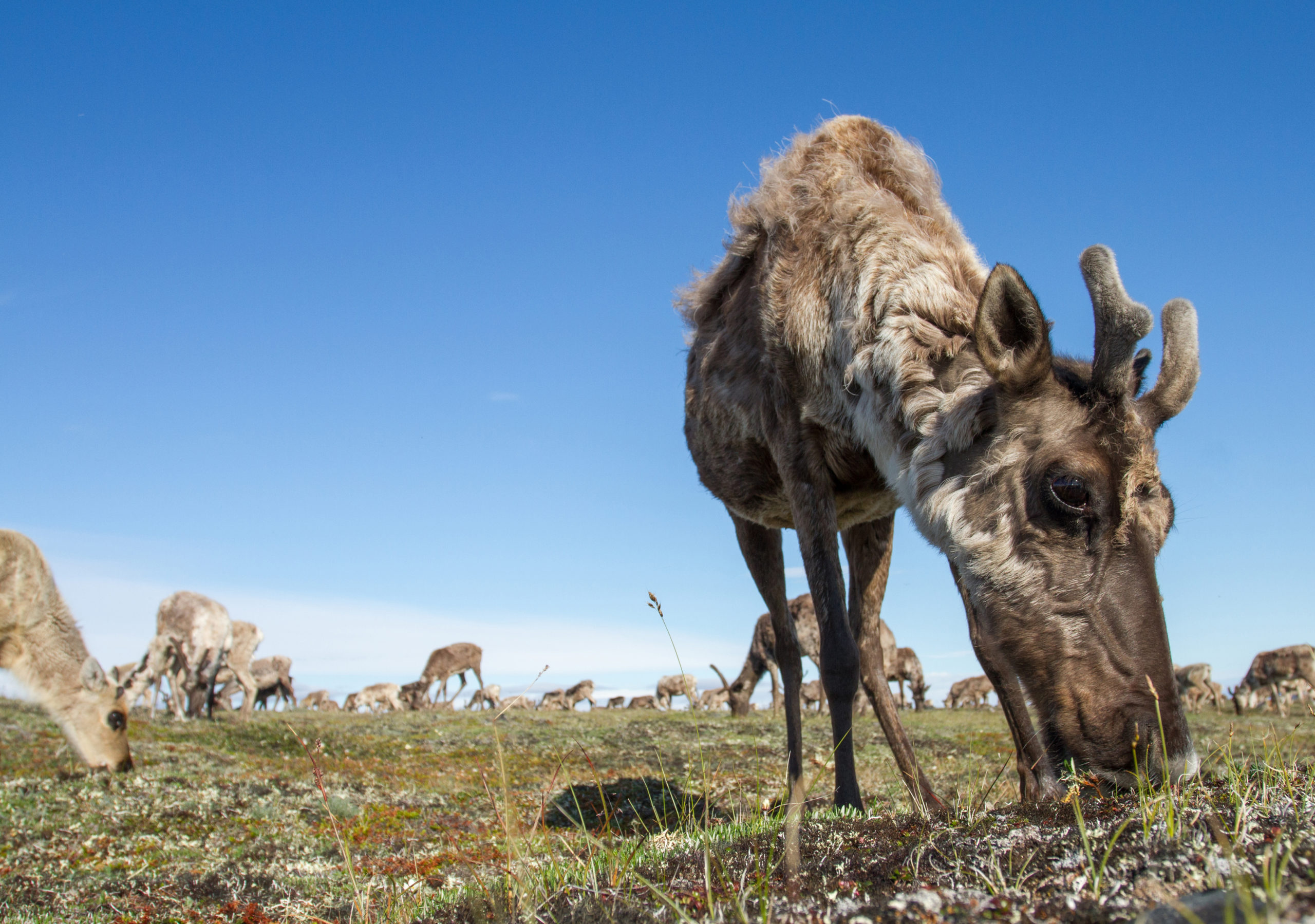Together, we can restore nature. Sign up for Engage for Nature today!
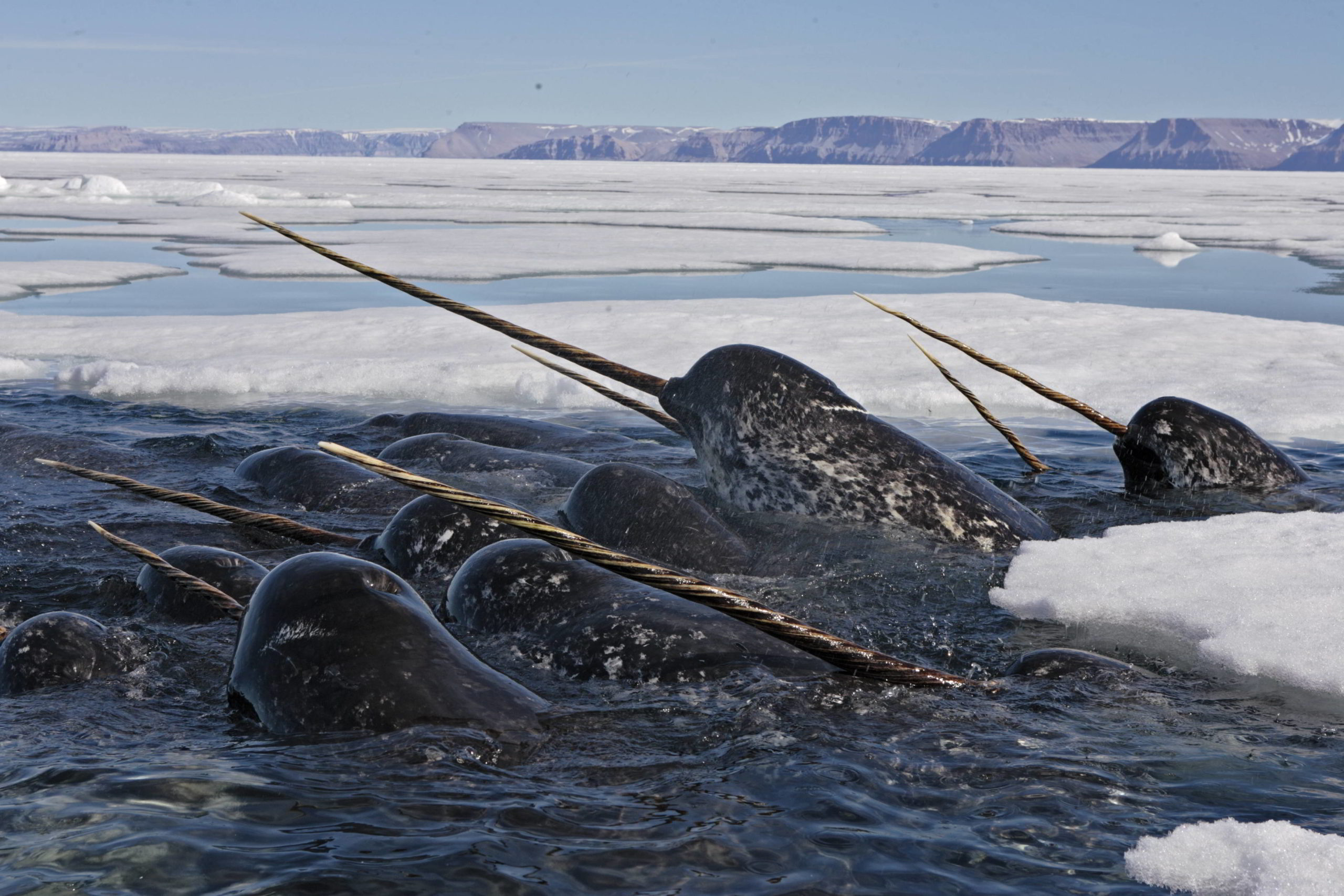
Arctic Species Conservation Fund
The Arctic Species Conservation Fund supports research and stewardship actions, safeguarding some of Canada’s most emblematic species.
Helping Wildlife Thrive in a Changing Arctic
The Arctic Species Conservation Fund supports high-quality stewardship and research initiatives focused on wildlife and habitats in the Canadian Arctic. WWF-Canada relies on partnerships with Indigenous organizations and the best available information to jointly advocate for effective Arctic conservation policies and legislation. Established in 2016, the ASCF is proud to support applied conservation initiatives that focus on Arctic wildlife including Atlantic walrus, barren-ground caribou, beluga whales, bowhead whales, narwhal, polar bears, and ringed seals.
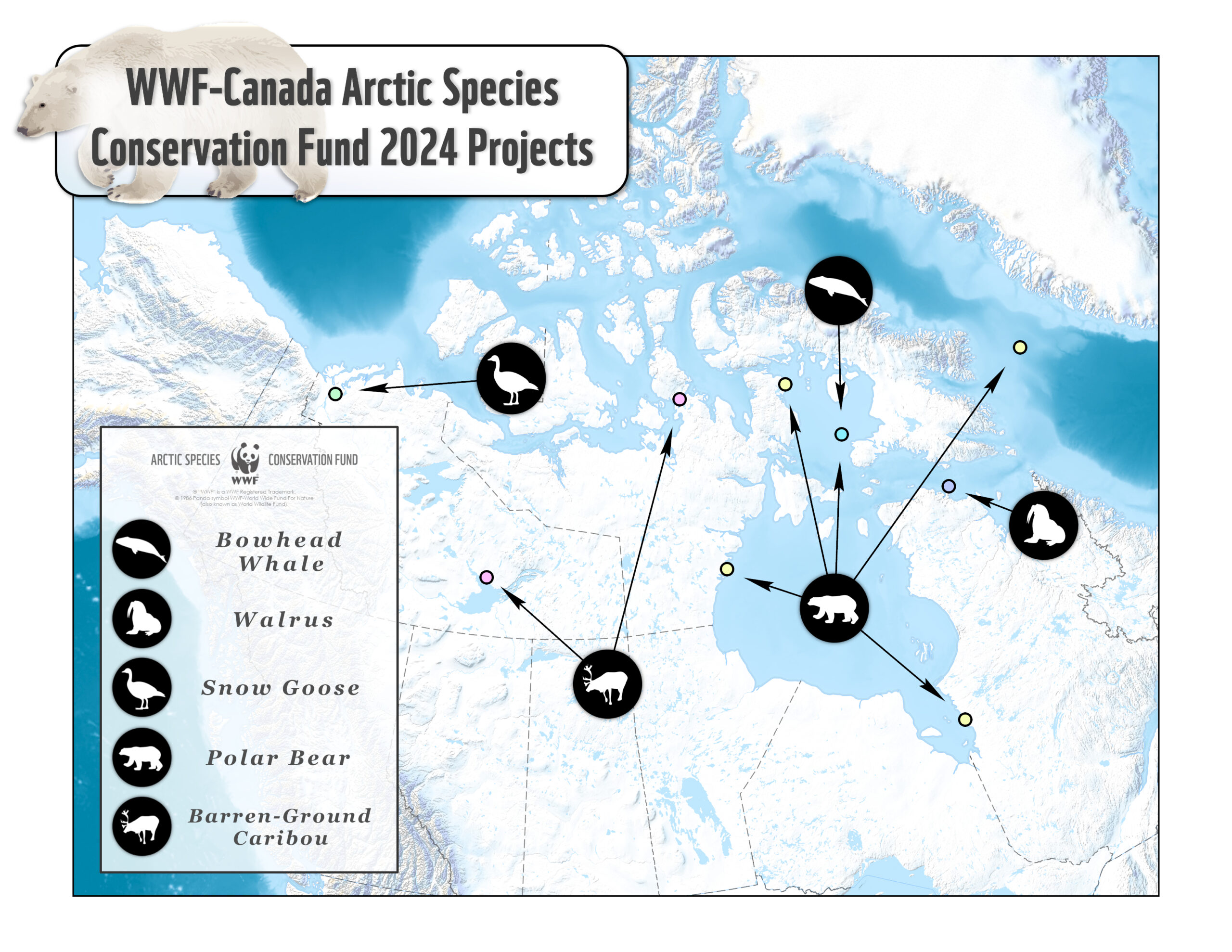
A History of Success
Since the Arctic Species Conservation Fund began in 2016, more than 80 projects have been supported across Canada’s Arctic. Results from these projects include:
- Community-based monitoring that led to the discovery that narwhal stress hormones have increased 100% in recent years as shipping intensifies and the climate warms.
- The mapping of all known polar bear denning habitat across the Canadian Arctic.
- Updated polar bear subpopulation estimates including good news for the M’Clintock Channel and Gulf of Boothia subpopulations.
- The mapping of calving grounds of the struggling Baffin Island caribou herd using Inuit Qaujimajatuqangit (Inuit Knowledge) workshops.
- A new method to study the impact of disturbance from mining activity on barren-ground caribou.
- The discovery of a novel way the narwhal tusk is used to feed in the area around Tremblay Sound.
- The development of drones as a non-invasive method of studying bowhead whale feeding habits and population demographics.
- Acoustic monitoring and aerial survey analyses to learn how increased ship traffic and ice-breaking along proposed shipping routes affect marine mammals in north Baffin Island.
- Mapping all known walrus haul-outs in Canada and advocating for the avoidance of these areas by ships through Mariner’s Guides and intervention in industrial development projects.
Applicants from all backgrounds (community groups, Hunters and Trappers Organizations, governments, universities, independent researchers, non-government organizations, etc.) and fields of study (Indigenous Knowledge (IK), Inuit Qaujimajatuqangit (IQ), natural sciences, social sciences, etc.) are eligible to apply.
The types of projects the fund seeks to support include:
- Indigenous Protected and Conserved Area projects at any stage of development, including scoping
- Initiatives that enable communities to participate in Land Use Planning, Environmental Impact Assessments, Strategic Environmental Assessments, Species at Risk listing processes etc.
- Studies on the resilience of Arctic habitats
- Projects that demonstrate the potential of economic opportunities for northern communities through conservation programming
- Nature-Based Solutions projects seeking to identify, restore or protect areas of carbon storage
- Understanding the effects of underwater noise, ice breaking and oil spill events on marine mammals
- Understanding the impacts of ship-based contaminants (black carbon, grey water, heavy metals, invasive species, microplastics, scrubbers etc.) on marine mammals and Arctic marine habitats
- Research furthering our understanding of the effects of roads, development sites and other forms of disturbance on caribou and their habitats
- Identification and characterization of critical habitat for caribou
- Development and implementation of methods to reduce human-polar bear conflict in communities
How to Apply
Applications should be submitted in PDF format to arcticspecies@wwfcanada.org. For full fund criteria, please refer to the 2024 call for proposals available in English, Inuktitut and French.
Arctic Species Conservation Fund Projects
Arctic Whales
- Assessing the impact of underwater noise from ships on bowhead whales in Foxe Basin, NU
Bowhead whales are highly evolved to live in an ice-covered environment and their presence is significant to Inuit culture and food security.
Like other baleen whales, they rely heavily on acoustic communication, particularly in the low frequency bands. As there’s significant overlap between their vocalizations and noise produced by shipping, this project’s primary objective is to study bowhead whales in Foxe Basin, NU to measure their behavioral reactions in response to ship noise.
How bowhead whales react to ship noise is not well known, but is critical for predicting how increased ship traffic will impact this species.
Project partners: Wildlife Conservation Society Canada, Igloolik Hunters and Trappers Organization
Polar Bears
- Reducing human-polar bear conflict in Whale Cove, NU
Driven by a variety of factors, including climate change and related reductions in annual sea-ice coverage on Hudson Bay, polar bears are spending more time ashore.
To prevent polar bear and human conflict in Whale Cove, the Issatik HTO will continue implementing their successful polar bear monitoring and patrol program during fall and early winter, when conflicts are most common, to keep the community and polar bears safe while documenting their observations of the drivers of polar bear behaviour.
Project partners: Issatik Hunters and Trappers Organization
- Elevating Inuit voices in climate change through support of the documentary Melting Down
This documentary examines the effects of climate change on the Nunavut community of Sanirajak. Viewers will follow the personal journey of host Crystal Martin, who is originally from Sanirajak, and hear from Inuit knowledge-holders and other local community members.
This documentary delves into the far-reaching impacts of climate change on Inuit communities by exploring what has already been lost over the past several decades — and what is at risk of being lost culturally, economically and spiritually in the coming years.
Project partners: Indigenous Geographic
- Incorporating Inuit Qaujimajatuqangit (knowledge) into the aerial survey of the Foxe Basin polar bear subpopulation
Polar bear subpopulations must be assessed at regular intervals to determine their abundance and relative condition as these are important factors when making polar bear management decisions.
This project will complete a polar bear population survey for the Foxe Basin subpopulation while contributing to the development of a more holistic survey design that incorporates Inuit Qaujimajatuqangit (knowledge) from the communities who live among this subpopulation.
Project partners: Government of Nunavut, Integrated Ecological Research
- Nanuk narratives: Documenting, preserving, and communicating Inuit Knowledge of the Davis Strait polar bear subpopulation in the Eastern Arctic
This project explores how collective Inuit Knowledge can be more accessible, influential and better implemented for long-term stewardship and sustainable Inuit harvesting of polar bears.
An emerging priority from this working group has been to document and co-produce research-based visual media that present Inuit Knowledge and experiences with polar bears in accessible and culturally appropriate ways, leading to the docu-series Nanuk Narratives.
Project partners: Torngat Wildlife Plants and Fisheries Secretariat, the Nunavik Marine Region Wildlife Board, Nunavut Wildlife Management Board, Pangnirtung Hunters and Trappers Organization
- Investigating the ecology of the world’s southernmost polar bears through community-based research in the Eeyou Marine Region of James Bay
This project is a multi-year field-based polar bear study in the Eeyou Maine Region of James Bay. Working alongside local Indigenous governments and HTOs, the team will use hair snares and camera traps to non-invasively investigate the genetics, diet, body condition, and habitat of the world’s southernmost polar bear population.
The project aims to address concerns from Indigenous communities across the Arctic about the scientific techniques used to study polar bears by developing and implementing research approaches centred on Indigenous Knowledge and community-based non-invasive methods.
Project partners: McGill University and the coastal communities of the Eeyou Istchee
Walrus and others
- Assessing walrus vulnerability to disturbance using satellite telemetry, stationary cameras and acoustics in Foxe Basin, NU
The primary objective of this project is to quantify walrus responses to vessel-based disturbance at haulout sites, through telemetry data and photo analysis, and at sea, through telemetry.
In anticipation of shipping increases within the next five years from the Baffinland mine, this research will focus on the Foxe Basin and Hudson Strait shipping corridors.
Project Partners: Fisheries and Oceans Canada and the Hunters and Trappers Organizations of Igloolik, Sanirajak, Coral Harbour and Kinngait
- Nin Nihlinehch’ì’ – Li’ hàh Guk’àndehtr’inahtìi (Animals at risk – Animals we are watching closely)
Gwich’in knowledge-holders, including Elders and hunters, will work together with scientists and wildlife managers to share knowledge about important birds that may be at risk in the Gwich’in Settlement Region in the Northwest Territories, including shorebirds, migratory waterfowl, songbirds and others.
During this workshop, participants will discuss ecology, threats, environmental changes and conservation in order to promote Indigenous ways of knowing and knowledge-sharing between conservation stakeholders.
Project Partners: Gwich’in Tribal Council
Barren-Ground Caribou
- Land Use Planning in the traditional territory of the North Slave Métis Alliance in the Northwest Territories
The North Slave Métis Alliance is undergoing the development of a land use plan for their traditional lands in the Northwest Territories by holding workshops with elders, reviewing community maps and documenting traditional knowledge and land use in context of important environmental and cultural features.
Land use planning is an important aspect of conservation which aims to establish clear guidelines as to what is off-limits to development and where development may be permitted. Developing a land use plan for the region will support the organization’s continued efforts in environmental conservation and the preservation of culturally important places.
Project partners: North Slave Métis Alliance
- Caribou harvest monitoring in Arviat, Nunavut
This project’s objectives are to collect and summarize Beverly and Qamanirjuaq caribou harvest data from Arviat, NU, to provide users with accurate information to assess herd vulnerability while developing a consistent and community-led method for harvest data collection that supports local management decision-making and could potentially be expanded across the Kivalliq region.
Arviat Hunters and Trappers Organization, Beverly and Qamanirjuaq Caribou Management Board
- Supporting Taloyoak Umaruliririgut Association’s Niqihaqut initiative – Climate, caribou and sustainable harvest in Taloyoak, NU
The project demonstrates the power of community-driven efforts to solve food sovereignty issues while preserving the environment on which people and wildlife depend. This project will bring new opportunities and benefits to the Inuit of Taloyoak and forge new paths towards resilient and sustainable economic opportunities that are consistent with local values and tradition.
Niqihaqut, which means “Our Food” in Inuktitut, will research the climate vulnerability of local caribou and sustainable harvesting in support of community-led efforts to develop the Aqviqtuuq Inuit Protected and Conserved Area.
Project partner: Arviat Hunters and Trappers Organization, Beverly and Qamanirjuaq Caribou Management Board
What is our arctic team working on?
Our dedicated team of conservationists and researchers are constantly out in the field gathering facts and data. Read more about their work.

